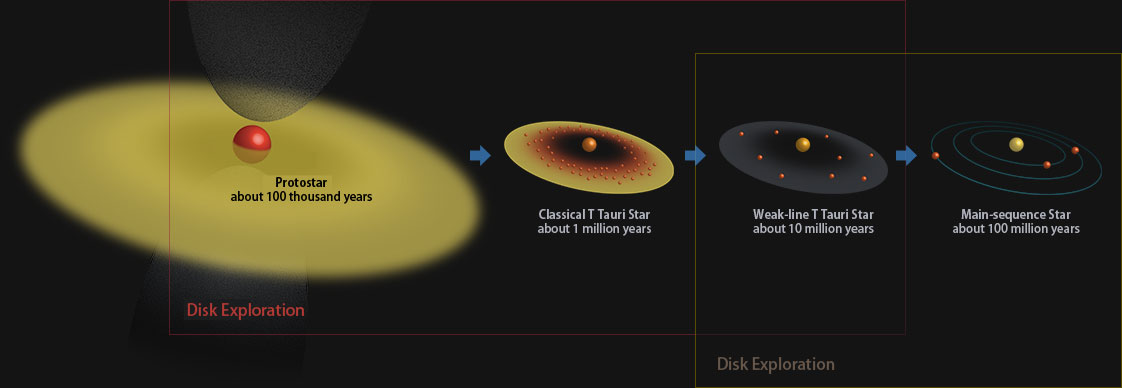Summary of Project
An observation project that is mainly led by the project office is SEEDS (Strategic Explorations of Exoplanets and Disks with Subaru). For exploring the exoplanets and the circumstellar disks which are the parent of the planets, this project mainly uses High Contrast Instrument for the Subaru Next Generation Adaptive Optics (HiCIAO) developed for the Subaru Telescope and 188-Element Adaptive Optics (AO188) which corrects turbulence of atmospheric.
The observations started in October 2009, and make exploration about 500 celestial objects with using the Subaru Telescope at 120 nights for five years.
From this, we explore about “our Solar System is universal or not” by direct observation method. Also, this project cooperates with not only domestic universities but also with many foreign researchers. It is the international project consisted by more than 100 people centered on Japan.

Planet Exploration

At the time of January, 2013,the number of discovered exoplanets is over 3500 including strong candidates. However, taking direct image of planets is difficult in technology comparing with indirect methods, and there are only about 10 samples of direct imaging planet. Most of exoplanets which is taken by indirect imaging are close and rotates around the central star. On the other hand, the direct imaging is good at to take large planets which is Jupiter-like planets, distance and rotate around the central star, same as the exoplanets actually direct imaged. In this way, the large planets which are far and rotate around the central star are not able to create with current planet formation models. For this, "taking the image of second Jupiter and reviewing it" is the one of the purpose of SEEDS Project.
Right Image: A false-color, near-infrared image of the Kappa And system.
Image processing removed the light from the host star, which lies behind the mask (a software-generated, dark disk) at the center of the square. The colored speckles represent starlight left over after removal of light from the host star. Separated by about 55 Astronomical Units from its host star, the super-Jupiter, Kappa And b (upper left), resides at a distance about 1.8 times greater than Neptune's orbital separation from the Sun. (from Subaru Telescope release)
Disk Exploration

At the time of stars birth, a disk composites with gases and dusts are formed around the star. Because it is thought that the planets are born inside the disk, it is called as “Protoplanetary Disk”. This disk becomes thinner as the star grows; and taking directly image of the disk becomes difficult. Also, even if we know about the planets are born here, we do not know specifically when/where/how the planets are born. When Jupiter size planets are born in the disk, it is known that a structure is formed inside the disk affected by the gravitation of it. By taking direct images of protoplanetary disks in various eras and researching the structure of these, finding when and where planets are born is one of the SEEDS project purposes.
Right Image:Image illustration of PDS70
There are disks inside and outside, and there is a large gap between them. In the gap, some newborn planets orbits around. There is a possibility to exist this large gap by the gravitational effects of these planets.
Evolution of Planetary System and SEEDS Project

